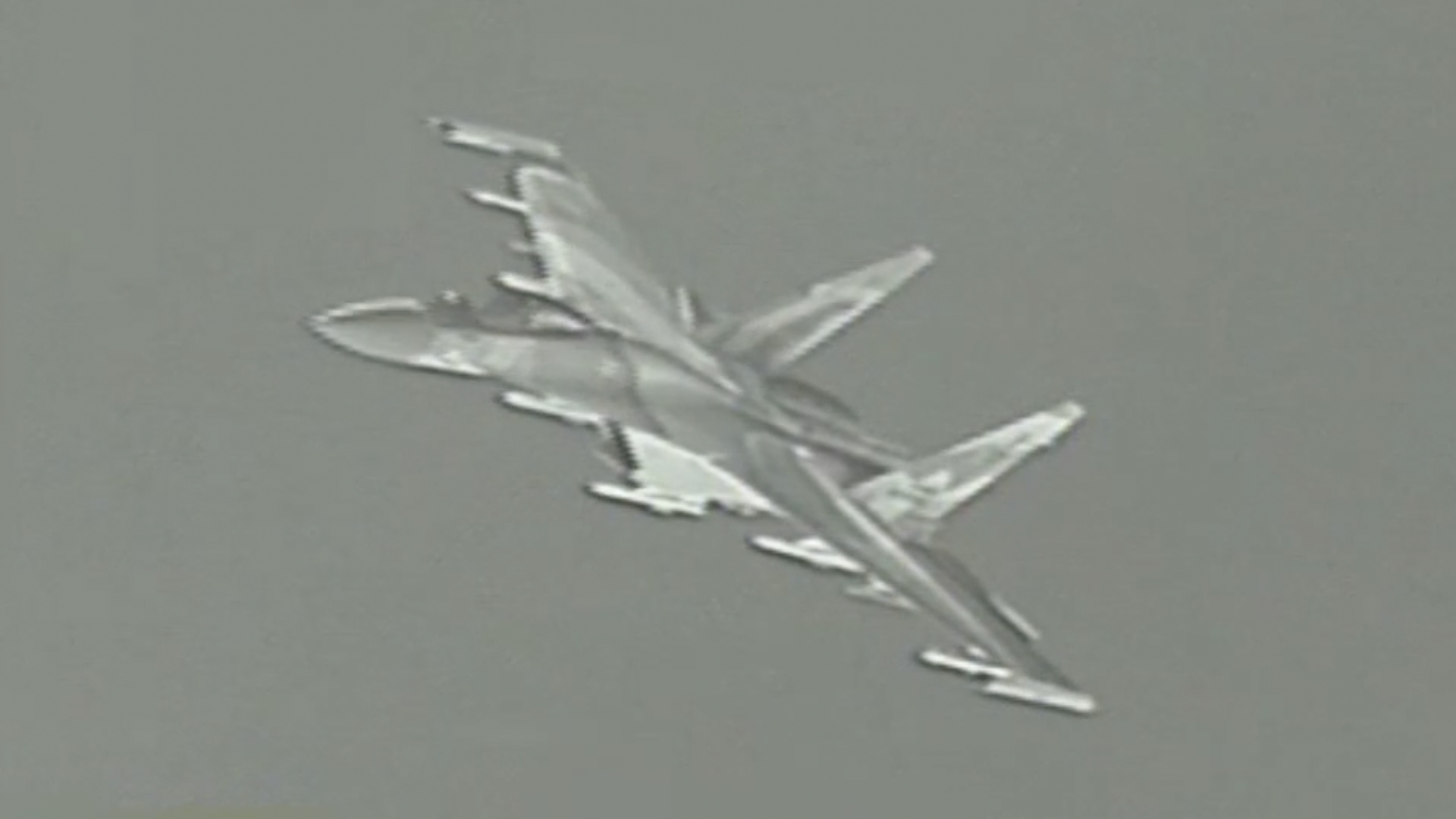

The skies over Syria are starting to look a lot like Tom Cruise’s first encounter with the MiGs in Top Gun.
Despite established rules designed to prevent any sort of conflict between Russian and U.S. forces operating parallel to one another in Syria, Russian pilots are locking onto U.S. aircraft with their radars and taking other provocative actions on a daily basis, according to officials with U.S. Air Forces Central Command.
“Russian forces have violated deconfliction protocols with Coalition forces almost 100 times in two months, conducting armed overflights of ground forces in Syria 26 times, flying within 500 feet of U.S. aircraft, and in the last week, jamming U.S. aircraft electromagnetic systems,” Air Force Lt Gen Alexus Grynkewich, head of AFCENT, told Task & Purpose. “These behaviors significantly interfere with AFCENT’s ability to execute operations safely and effectively and increase the likelihood of miscalculation.”
Subscribe to Task & Purpose Today. Get the latest military news, entertainment, and gear in your inbox daily.
Grynkewich recently told Defense One editor Marcus Weisgerber that Russian pilots over Syria have become so aggressive toward U.S. aircraft that their behavior is encroaching on open hostility.

“From an air-to-air perspective, we have typically stayed a few miles from each other in all instances and just shouted from a distance, let each other know we’re there when we had some sort of an interaction,” Grynkewich said. “And now they’re aggressively maneuvering, almost like they’re trying to a dogfight, if you will. And that’s very concerning area wise.”
Separately, Grynkewich also told Wall Street Journal reporter Dion Nissenbaum that he is most concerned about Russian aircraft that fly over U.S. military positions while armed with air-to-ground munitions, noting that U.S. military aircraft do not fly over Russian troops with such weapons.
“I don’t think that anyone’s going to give an order for Russians to go in, attack a position or anything like that,” Grynkewich told the Wall Street Journal. “But I do think it just increases the risk of miscalculation. Why would you even put yourself in a situation where that would be physically possible? You ought to avoid those locations or at least the positions of their ground forces. That’s where I see the most risk.”
About 900 U.S. troops are currently deployed to Syria as part of an ongoing mission to prevent the Islamic State group from reemerging as a major threat in the region. Russia is an ally of Syrian President Bashar al-Assad and its forces also operate in Syria.
Needless to say, Russian and U.S. troops in Syria have not always gotten along. In February 2018, U.S. military aircraft decimated a force of Wagner Group mercenaries that had attacked an outpost in Syria where American troops were based.Two years later, videos emerged showing that Russian and U.S. military vehicles were locked in an undeclared road war in northeastern Syria.

But tensions between the United States and Russia reached – and perhaps surpassed Cold War levels – after the latter’s invasion of Ukraine last February. Since then, the U.S. government has provided the Ukrainians with $35.4 billion in military assistance, including High Mobility Artillery Rocket Systems, or HIMARS, that have helped Ukraine inflict heavy casualties on the Russians.
Russia is now playing an aerial chess match with the United States and NATO all over the world. In March, a U.S. Air Force MQ-9 Reaper drone crashed over the Black Sea after a Russian SU-27 “Flanker” fighter jet collided with it.
The incident occurred as two Russian jets tried to dump fuel in the Reaper’s flight path. The Russian pilot whose plane struck the drone later received a military award.
Close encounters between Russian and NATO aircraft increase the chances that the new Cold War could turn hot. In September, a Russian fighter pilot who misinterpreted what a radar operator told him tried to destroy a manned British surveillance aircraft over the Black Sea, but a malfunction stopped from the missile from launching, according to the New York Times, which cited a classified intelligence report that was one of many documents allegedly leaked by Airman 1st Class Jack Douglas Teixeira.

From the number of aggressive actions that Russian pilots have taken over Syria recently, it’s clear that they are trying to provoke U.S. pilots into a fight and then blaming the incident on the United States, said retired Air Force Lt. Gen. David Deptula, dean of the Air Force Association’s Mitchell Institute for Aerospace Studies think tank.
The Russians would likely use such a confrontation with U.S. aircraft to justify attacks on NATO forces in Europe, expanding the Ukraine war, Deptula told Task & Purpose. The behavior shown by Russian pilots over Syria is not just unprofessional: Jamming is a hostile act.
“The U.S. will bend over backwards not to engage the Russians except in most dire of circumstances,” Deptula said. “Could Russian pilots open fire on U.S. aircraft over Syria? Sure, if they want to die. Self-defense is a right inherent in international law.”
The latest on Task & Purpose
- USS George HW Bush aircraft carrier rocks battle flag on return home from deployment
- Accused Air Force intel leaker Jack Teixeira’s bedroom is the most cringe thing we’ve ever seen
- The Navy wants to sell off its troubled littoral combat ships to allies after just a few years in service
- The beloved A-10 Warthog has a brand new role: bomb truck
- Army National Guard team wins this year’s International Sniper Competition